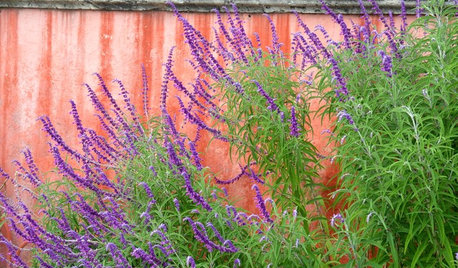Oleander branches blackening - frost?
raptoress
17 years ago
Related Stories

GARDENING GUIDESGot Frost-Damaged Plants? How It Happens, and When and How to Prune
Crispy brown leaves are a sure sign that Jack Frost has been to your neighborhood
Full Story
FALL GARDENING12 Fabulous Fall Container Gardens
Celebrate the season with potted displays rich in color and texture
Full Story
GARDENING AND LANDSCAPINGGrow a Lush Privacy Screen
No need to wait forever for patio privacy the green way. These 10 ideas will get your screening up and running in no time
Full Story
LIFEHouzz Call: Show Us Your Nutty Home Fixes
If you've masterminded a solution — silly or ingenious — to a home issue, we want to know
Full Story
GARDENING GUIDESTop 12 Summer-Blooming Perennials for Deer-Resistant Drama
Can you have garden color, fragrance and exciting foliage with hungry deer afoot? These beauties say yes
Full Story
CHRISTMAS10 Easy Decorating Ideas for a Festive Entryway
'Tis the season for welcoming guests with wreaths, special lighting and plenty of comfy seating
Full Story
GARDENING GUIDES10 Plants for Colorful Fall Blooms in the Drought-Tolerant Garden
Want fall color but not a big water bill? Consider these not-too-thirsty fall bloomers
Full Story
REGIONAL GARDEN GUIDESCalifornia Gardener's March Checklist
Give natives and tropicals a well-deserved spotlight — plus, discover an easy herb that keeps on giving
Full StoryMore Discussions



ianna
raptoressOriginal Author
Related Professionals
Ballwin Landscape Architects & Landscape Designers · Signal Hill Landscape Architects & Landscape Designers · Maple Heights Landscape Architects & Landscape Designers · Hartford Landscape Contractors · Bergenfield Landscape Contractors · Davis Landscape Contractors · Estelle Landscape Contractors · Fort Hunt Landscape Contractors · Holland Landscape Contractors · Olympia Landscape Contractors · Saint George Landscape Contractors · San Benito Landscape Contractors · Yuba City Landscape Contractors · Northlake Landscape Contractors · Castaic Gardeners & Lawn Caresammyqc
ianna
raptoressOriginal Author